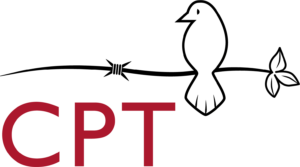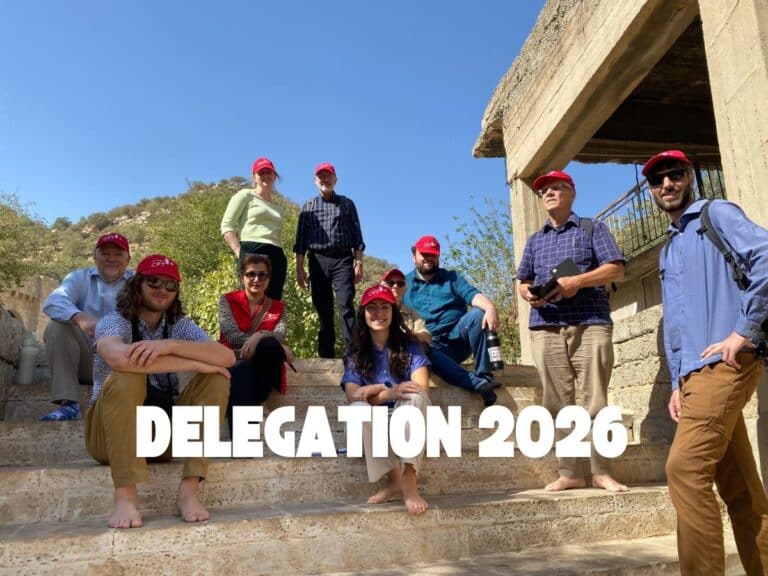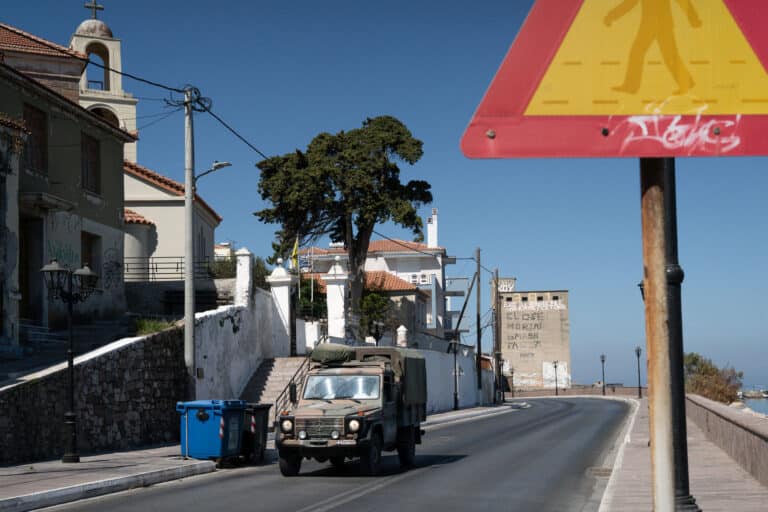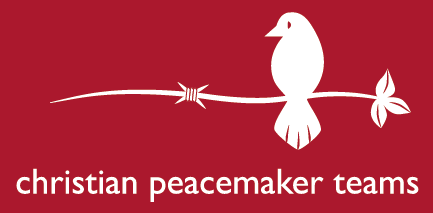The Wall. The big ugly wall. Drawn along the artificial, 2000-mile border between the US and Mexico, because of a war fought, in part, to expand slave territory, it is almost laughably pregnable and scalable even at its tallest points. The wall divides families and denies refuge and economic opportunity. Most monstrously, the barrier pushes fearful but hopeful migrants into the killing fields of the desert—the freezing, scorching, deadly desert.
Human history is a story of movement and settlement, of journeys and the creation of homes. One place among many around the world where this story plays out again and again is in the Mexico-U.S. borderlands. What makes our individual human experiences different is that some of us privileged ones glide safely across borders all around the world, while others of our brothers and sisters have their mobility harshly restricted and criminalized.
As the CPT US-Mexico Borderlands delegation (October 9-18), we visited the Wall on both sides of the border at multiple places for various lessons and reflections. At the cemetery in Douglas, Arizona, adjacent to the Wall, we meditated and paid our respects to the men and women who died trying to cross the desert, their names unknown. We took a short trek through Sonoran desert terrain, stopping at a water barrel near the border wall left for migrants who might find their way there. We saw beautiful murals painted on the Wall facing Agua Prieta, Mexico, visual creations by Mexican and collaborative artists to counter the symbolic and literal ugliness of the Wall. We took several trips back and forth through the Douglas-Agua Prieta port (and once through the Naco-Naco checkpoints) to meet with CPT partner organizations and to learn from amazing folks working on both sides of the border.
It was these people who gave us the most hope and the greatest challenge to live out our values. Our inspiration came from our interactions with heroic defenders of migrant rights and with organizations, some of them led by women, which foster human dignity in the borderlands. In Agua Prieta, we learned from Betto about the work of the CAME migrant shelter and from Bridich about the work of the Migrant Resource Center (CRM in Spanish). These organizations have been responding over more than two decades to the basic needs of migrants who have arrived at Agua Prieta, both those who may wish to apply for entry to the US and those who have returned or been expelled through this border port. Over the years, dedicated individuals in CAME and CRM have also bravely accompanied vulnerable people during periods of particular peril with the local organized crime powers.
In Agua Prieta, Naco, and Tucson, we learned from women who lead centers of empowerment, including Laura at the CATPSIC drug and alcohol rehab house; Lupita at the Naco Wellness Center that includes a truly wow-inducing community garden; Rocío at Casa Cardo, a new house for asylum seekers in Tucson; and Matty at the Douglas Prieta Trabajan/Working women’s coop that trades in hand-crafted sewing products, gardening, and cooking. We also learned from Adrian about the small farmer-owned Café Justo coop from which we gladly consumed serial cups of coffee and ordered bags of fair/direct-trade coffee to share with our groups and congregations back home.

As an example of CPTers’ Jack and Linda Knox’s commitment to reconciliation work, we also met with two agents from US Customs and Border Protection (CBP) from which we learned about their assigned duties—regulating the flow of agricultural and other goods from Mexico, interdicting arms being smuggled from the US to Mexico, trying to interrupt the flow of fentanyl and other drugs from Mexico to the ravenous US consumer market, and endeavoring to curtail trafficking of children. We asked questions about the broken and inhumane US immigration system and the work of their CBP Border Patrol colleagues in the border areas away from the ports of entry. We listened politely as they mostly sidestepped those inquiries.
Toward the end of our visit, we took part in the Healing Our Borders Vigil. Since 2000, they have been holding this powerful spiritual and political action every Tuesday evening along a major thoroughfare in Douglas. At the vigil, we called out more than one-hundred names among the thousands who have died trying to cross the border as we held their crosses aloft and then placed them on the curbs facing the road.
Throughout our time in the borderlands, each of us in our delegation—one of us an immigrant, all of us U.S. citizens—felt deeper gratitude for our unearned privilege of near total freedom of safe movement across states and countries. Even as we renewed our gratitude, we grieved and felt a great fury that so many of our sisters and brothers on the other side of the Wall and across the world are subject to brutality and danger in their journeys to escape danger and to follow their needs and dreams. We ended our delegation with the responsibility and the resolve to fight hard for policies that afford to others the same freedoms we enjoy of safe movement and the ability to make homes where we wish.
By David Leaman for the US-Mexico Borderlands delegation
(Leaders: Jack Knox, Linda Knox, Weldon Nisly; Participants: David Blair, Lina Hervas, Pat Lagerwey, David Leaman, Marjorie Linda-James)




